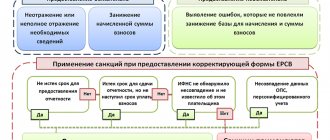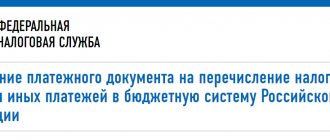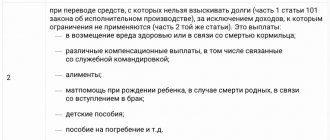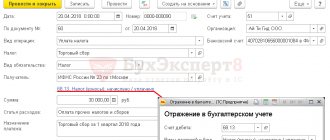Types of payment orders
The payment order can be urgent or early. Urgent payment orders can be used in cases where:
- prepayment (advance payment) is made;
- payment is made after the goods have been shipped;
- Partial payments are made for large transactions.
Early payments are deferred payments and are used only by agreement of the parties involved in the contract, for example, during a sale and purchase, and if it does not incur monetary losses to the parties to the transaction.
How a payment order is created
for creating an order . One of the most common involves the following main steps:
Log in to Sberbank business online ;
In the menu, select the category with payments and transfers;
Select the required type of payment . The full range can be seen by clicking on “All payments”. And then you will need to select a transfer to the counterparty that is most in demand or any other type of transfer;
Fill out the form that appears on the new page. Online business from Sberbank is standard;
Wait until the payment order . If necessary, the action can be canceled at any time before the generation process is completed.
You can also use another method to create such a document. It works in Sberbank business only if the client has previously transferred funds to counterparties. To fill out the form, you will first need to go to the category with accounts and statements and select from the list the order that was previously completed. Then you need to click on the “Payment to counterparty” section on the right and check the details to prevent
an error during the operation. Then you will need to indicate the transfer amount and fill out the comment section. And only then you need to put an electronic signature in order for the processing of the document to begin.
create an order using another method. To send funds to the recipient in Business Online, you will need to go to the “Counterparties” category. This category is in the top corner. On the new page you will need to select the one that suits you from the list of counterparties. After this, to create an order, you need to click on the “Counterparty” button. Next, you need to fill out the required fields and send the form to the banking institution for processing.
Settlements carried out by payment order
Using a payment order you can make the following calculations:
- payment for work performed, products supplied or services provided;
- transfer of money to budgets of all levels and to extra-budgetary funds;
- transfer of money for the purpose of returning or placing loans or deposits and paying interest on them;
- transfer of money for other purposes provided for by law or agreement;
- payment for goods, works or services in advance;
- making periodic payments.
How to create a new payment order in the client bank
There are three ways to create payment orders in the client bank:
Let's first look at the option where the payment is a one-time payment and with a high degree of probability will not be repeated in the future. There is no need to create a template for such payment.
We are on the main page of the client bank. A new payment can be created using the “New Payment” button or selecting the appropriate menu item in the left column:
We get to the form for filling out payment details:
Next, select who the payment is intended for:
- legal entity;
- to an individual;
- budget payment.
Depending on this, the availability and name of the fields to be filled out in the payment order will vary. By default, “Legal Entity” is selected. We will send the payment to him. To select another option, click on it.
How to fill out a new payment order in the client bank
The payment number is entered automatically in order from the beginning of the year. It can be adjusted if necessary.
The payment sender details are already filled in. Recipient details must be entered:
- Name,
- INN/KPP,
- account number and bank.
By name or TIN, the program searches for a counterparty in the Unified State Register of Legal Entities and can automatically fill in these fields. You must enter your account number and bank name yourself. If payments were previously made to this counterparty, the program can automatically fill in the account number and bank using the old data. The search looks like this:
You can find more complete information on the topic in ConsultantPlus. Free trial access to the system for 2 days.
We select the required counterparty from the list, for example: Megafon PJSC, and fill it with the payment order field data. When entering the BIC, the name of the bank is filled in automatically.
Fill in the remaining fields:
- UIN (if there is no value, set it to 0);
- sum;
- purpose of payment.
The program will remind you of the need to indicate VAT. You can select a rate in the drop-down list:
Now you can:
- Sign and send the payment. In this case, the code field will immediately appear. When it is entered, the payment is signed and sent for execution.
- Save the payment order. In this case, the payment appears in the “Payments in progress” list in the “For signature” section.
Check the box “Payments available” and click “Sign”.
Next you need to enter your bank code. The payment will go to the “For sending” section. In this section, the actions are similar to the actions in the “For signature” section. After clicking the “Send” button, the payment order will go to the bank for execution.
Payment order
When filling out a payment order, it is important to correctly indicate the order of payment. If it is entered incorrectly, the bank will refuse to carry out the transaction.
- Payments that occur under executive acts on compensation for harm caused to health or life and payment of alimony.
- Transfers in accordance with writs of execution for the payment of severance pay upon dismissal or salary arrears and payment of royalties.
- Payment of debts on taxes, fees and contributions and payment of salaries to employees.
- Cash payments for other executive acts.
- All other payment documents in the calendar order of their receipt.
The Constitutional Court of Russia invalidated the distribution of the 3rd and 4th stages, however, changes have not yet been made to the Civil Code. All acts or their individual provisions recognized as unconstitutional shall lose force. The court classified all payments to the budget and state extra-budgetary funds as the third priority. It turns out that the fourth stage includes only payments to non-state extra-budgetary funds. Debiting funds from the account for claims that relate to one queue occurs in the order in which documents are received.
Signing and sending payment
A payment order is a very important financial document that determines the movement of funds, so once completed it must be approved. You need to do the following:
- After creating a document, the message “Receive SMS code” appears on the right.
- To sign a payment, you just need to enter the password received via SMS.
- If several people in an organization must approve an order, everyone performs similar actions.
- It is important to send the document to the bank, otherwise the payment will not be accepted for execution.
- An alternative option allows you to sign a payment using a token.
It is recommended to check the details in advance, especially when entering new data.
Procedure for filling out a payment order
The payment order is filled out in accordance with the requirements of Bank of Russia Regulation No. 383-P dated June 19, 2012 “On the rules for transferring funds” and Appendices 1, 2 and 3 to this regulation. The payment order must not contain empty fields, otherwise the bank will not carry out the transaction. In the case where this is impossible, optional or not necessary, you must enter zero (0). The payment order is filled out in four copies:
- 1 is used when written off at the payer’s financial institution and ends up in bank daily documents;
- 2 is needed to credit money to the recipient’s account and is sent to his bank;
- 3 confirms the bank transaction and is attached to the recipient's account statement (at his bank);
- 4 with the bank’s stamp is returned to the payer and serves as confirmation of acceptance of the payment for execution.
| Props number | Props name | Meaning |
| 1 | Payment order | Name of order |
| 2 | 0401060 | Form number according to the All-Russian Classifier of Management Documentation |
| 3 | № | Order number. The order number must be indicated in numbers other than 0 |
| 4 | date | The date of drawing up the payment order is indicated |
| 5 | Payment type | It is indicated as “urgent”, “telegraph”, “mail”, another value in the manner established by the bank, or the value is not indicated in cases established by the bank. In an order in electronic form, the value is indicated in the form of a code established by the bank. |
| 6 | Suma in cuirsive | It is written with a capital letter. The word “ruble” in the corresponding case is not abbreviated, kopecks are indicated by numbers, and the word “kopek” in the corresponding case is also not abbreviated. If the payment amount is expressed in words in whole rubles, then kopecks can be omitted, while the payment amount and the equal sign “=” are indicated in the “Amount” detail. |
| 7 | Sum | The amount is indicated in numbers. Rubles are separated from kopecks by a dash sign “-“. If the payment amount is expressed in numbers in whole rubles, then kopecks can be omitted; in this case, the payment amount and the equal sign “=” are indicated. |
| 8 | Payer | Legal entities indicate:
IP:
|
| 9 | Account No. | Payer's account number. The payer's bank account number is indicated. |
| 10 | Payer's bank | The name and location of the payer’s bank are indicated in the order on paper |
| 11 | BIC | The bank identification code of the payer's bank is registered. It was appropriated by the Central Bank upon its opening. |
| 12 | Account No. | Payer's bank account number. The number of the correspondent account of the credit organization, the correspondent sub-account of a branch of the credit organization opened in a division of the Bank of Russia is indicated. In the case where the recipient is a client of a Russian bank, the value of the details is not indicated. |
| 13 | payee's bank | The name and location of the recipient's bank is written. For example, JSC “Kirpich”, Moscow. |
| 14 | BIC | Bank identification code of the recipient's bank. |
| 15 | Account No. | The recipient's bank account number. In the case where the recipient is a client of a Russian bank, the value of the details is not indicated. |
| 16 | Recipient | Recipient legal entity:
IP Recipient:
Recipient: individual:
Recipient is an individual who is engaged in private practice:
If the transfer of money is carried out through a correspondent account, which is opened in another bank or branch of the organization, or through an inter-branch settlement account specified in the details “Account. No., indicates the name and location of this organization. |
| 17 | Account No. | Recipient's account number. |
| 18 | Type op. | Type of operation. The payment order code is indicated - 01. |
| 19 | Payment deadline. | Not filled in |
| 20 | Name plat. | Not filled in |
| 21 | Essay. plat. | Sequence of payment. The order of payment is indicated in numbers in accordance with federal law. |
| 22 | Code | UIN CODE |
| 23 | Res. field | The sign of the transfer conditions is indicated, including in the form of a code |
| 24 | Purpose of payment | The name of goods, works, services, numbers and dates of contracts, commodity documents are written down, and other necessary information may also be indicated. |
| 43 | M.P. | Place for the payer's seal imprint |
| 44 | Signatures | Payer's signature |
| 45 | Bank marks | Bank stamp. |
| 60 | TIN | Payer's TIN |
| 61 | TIN | Recipient's TIN |
| 62, 71 | — | Filled by the bank |
| 101-110 are filled in when paying payments to the budget or customs duties | ||
| 101 | — | Payer status is indicated |
| 102 | — | The payer's checkpoint is indicated |
| 103 | — | The recipient's checkpoint is indicated |
| 104 | — | The KBK indicator is indicated |
| 105 | — | OKTMO code is indicated |
| 106 | — | When paying tax payments, the payment basis indicator is indicated, which consists of 2 characters:
When making customs and other payments from foreign trade activities:
|
| 107 | — | The tax period indicator is indicated, which indicates the frequency of tax payment. |
| 108 | — | Indicate the number of the document on the basis of which the payment is made |
| 109 | — | The date of the document is indicated |
| 110 | Payout code | When paying taxes, advance payment, contribution, tax sanctions, fines and other payments administered by tax authorities, “0” is indicated. |
Standards for generating a payment order
Russian legislation establishes the form of payment order in the provisions of the Central Bank No. 2-P (the document describes the procedure for conducting cash payments) and No. 3838-P (order on bank transfer methods). According to legal requirements, the payment order must indicate the following details:
- Date and number of the document. The header of the payment order indicates the name of the document, the serial number of the paper in the bank-client program, as well as the date of its issue or transfer to the bank.
- Document form code for OKUD (OK 011-93). Russian legislation requires all banking organizations to draw up payment orders according to OKUD (All-Russian Classifier of Management Documentation) standards in order to simplify financial audits. Payer details. The payment order must contain the name of the organization or individual who sent the funds and the account number. The TIN (individual taxpayer number) is also indicated.
- Details of the payer's bank. The payment order indicates the name and legal address of the bank making the payment, its BIC, and the correspondent account number for transferring funds.
- Recipient details. The payment must contain the name, TIN, legal address and account number of the organization to whose details the funds are transferred. When making transfers in favor of private individuals, the citizen’s passport details, TIN and registration address are indicated.
- Payment information. The document must contain the purpose of the payment (for example, payment under an agreement), the total amount and the order of payment (a number from one to six). According to Russian legislation, first of all, funds are written off under executive documents for compensation of harm, then payments are made for wages, the third priority of payments is transactions in the Pension Fund (PFR) and the Social Insurance Fund (FSS).
- Deductions to various non-budgetary organizations form the fourth category of payments, then payments are made according to executive documents not related to compensation for harm or wages. Standard payments between counterparties constitute the sixth line of transactions.
- Type of operation performed. Standard payment orders refer to transactions of type 01. Government authorities also use code 02, indicating a collection order (the bank carries out a transaction without the prior consent of the payer).
- Signatures and seals of persons authorized to certify payment orders. In practice, payment orders are usually certified with an electronic digital signature (electronic digital signature) automatically at the time the document is generated. If necessary, the payment slip can be printed, certified with the signature of an accountant and the seal of the organization.
According to Russian law, a printed and stamped copy of a payment order can be submitted to the bank within ten days. The bank that has received the payment order must transfer the funds to the specified details within one business day. The exception is cases of shortage of funds in the payer’s current account and blocking of transactions according to the requirements of state regulatory authorities. After completing the required operation, the bank must inform the client (no later than the next business day) about the completion of the transaction.






